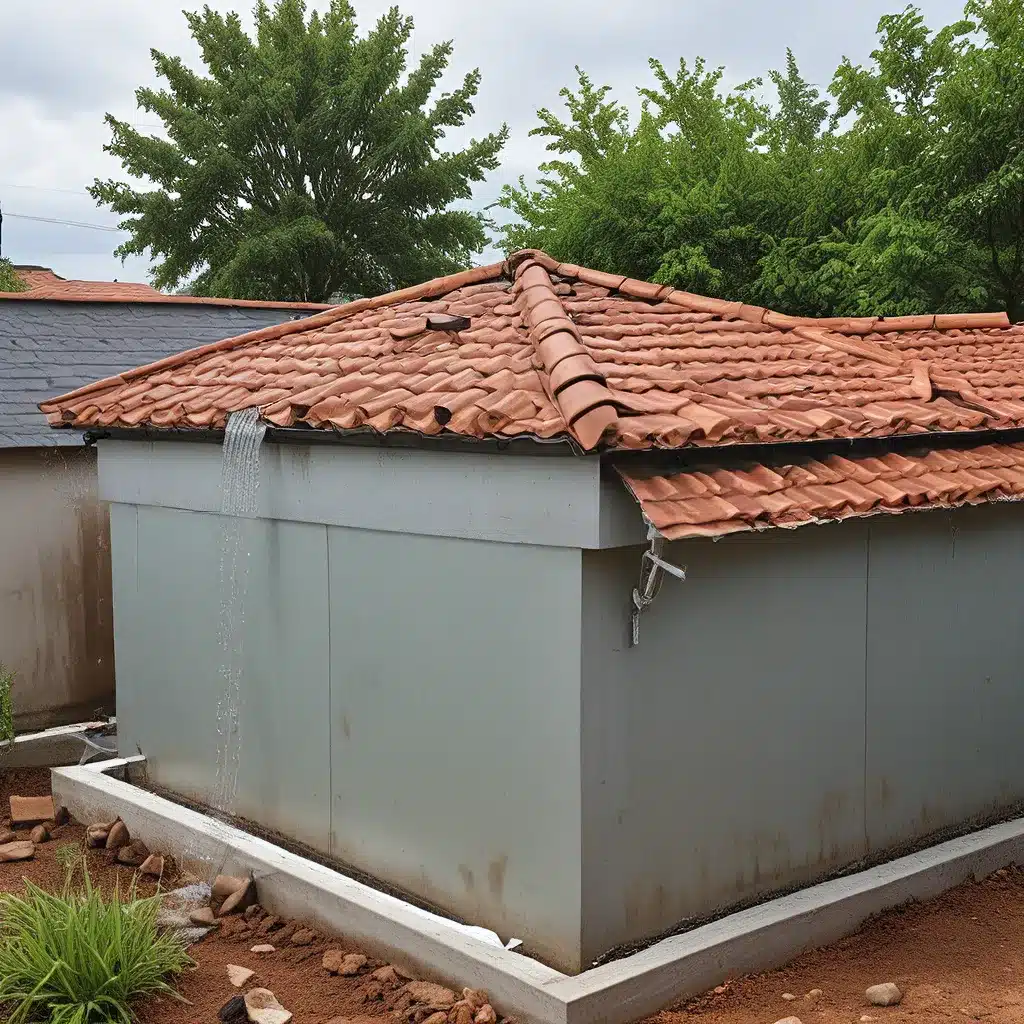
As I stood surveying my front yard, I couldn’t help but feel a twinge of excitement. Sure, it might have looked a little rough around the edges, with the sod freshly dug up and the dirt mounded into intriguing shapes. But to me, this was the canvas for an ambitious project – one that would transform my ordinary suburban homestead into a verdant, water-wise oasis.
Embracing the Power of Rainwater
Growing up, I was always fascinated by the way water seemed to flow and pool in the natural world. As an adult, that fascination only grew deeper as I explored the principles of permaculture and the art of rainwater harvesting. Why, I wondered, should we let all that precious rainfall rush down the drain when we could be harnessing its power to nourish our gardens and replenish the soil?
It was this question that set me on a mission to create a front yard rainwater harvesting system – one that would capture the runoff from my roof and channel it into an integrated network of trenches, berms, and a rain garden. The goal was simple: to reduce my reliance on municipal water and create a lush, productive edible landscape that thrived on nature’s own abundance.
Designing a Closed-Loop System
As I began planning my rainwater harvesting system, I knew that I wanted to embrace a closed-loop approach. Instead of funneling the water into a rain barrel or cistern, I wanted to hold it right in the soil, where it could slowly infiltrate and nourish the plants.
This was no small task, of course. Designing a rainwater harvesting system requires careful consideration of factors like soil type, slope, and sun exposure. But with a bit of research and a dose of permaculture inspiration, I set out to create a custom solution for my specific site.
Capturing Rainwater with Trenches and Berms
The first step in my rainwater harvesting journey was to disconnect the downspout and install a rain chain. This not only added a touch of whimsy to my front yard but also allowed me to direct the water into a shallow conveyance trench.
From there, the water flowed into a deeper infiltration trench, strategically positioned to capture as much runoff as possible. By making the trench slightly deeper as it approached the rain garden, I was able to create a gentle uphill gradient that encouraged the water to move in the direction I desired.
But the real magic happened with the asparagus berm – a mound of soil that I built up on the downhill side of the infiltration trench. This berm not only helped to slow the flow of water but also provided a perfect home for my edible perennials, whose deep roots would help to further infiltrate the water into the soil.
Harnessing the Rain Garden
As a final safeguard, I incorporated a rain garden into my design. This shallow, bowl-shaped depression served as a catchment area for any excess water, ensuring that it didn’t pool up or overflow onto my property.
I carefully selected a mix of native wildflowers to plant in the rain garden, including echinacea, aster, and blue-flag iris. These deep-rooted plants not only looked beautiful but also helped to slow the water’s infiltration, allowing it to gradually seep into the ground over the course of a few days.
The Transformative Power of Rainwater
As I watched my rainwater harvesting system come to life, I couldn’t help but marvel at the profound changes it was bringing about in my front yard. Gone were the days of lugging heavy watering cans or dragging out the hose – now, the water that once rushed down the drain was nourishing my edible landscape, reducing my reliance on municipal sources and creating a truly self-sustaining oasis.
But the benefits went far beyond just saving time and money. By capturing rainwater and allowing it to infiltrate the soil, I was able to build up the organic matter and improve the overall health of my garden. This, in turn, allowed me to expand my edible plantings, incorporating everything from currant bushes and black raspberries to strawberries and peppers.
Embracing the Journey of Permaculture
Of course, the journey of rainwater harvesting and permaculture design is never truly complete. As I continue to observe and evaluate my system, I know that there will always be opportunities for refinement and improvement. Perhaps I’ll add a rain tank to provide extra irrigation during dry spells, or experiment with different plants and layouts to further enhance the system’s functionality.
But that’s all part of the joy of permaculture – the constant learning, adapting, and problem-solving that keeps the process dynamic and engaging. And as I look out at my thriving front yard, I can’t help but feel a deep sense of gratitude for the power of rainwater and the way it has transformed my humble suburban homestead into a verdant, self-sustaining oasis.
So if you’re considering a rainwater harvesting project of your own, I urge you to dive in with both feet. Trust me, the rewards far outweigh the initial effort. After all, when you can harness the blessings of nature to create a lush, productive, and water-wise landscape, why would you ever want to do it any other way?
Exploring Further Resources
If you’re interested in learning more about rainwater harvesting and permaculture design, be sure to check out these helpful resources:
Tenth Acre Farm’s guide on front yard rainwater catchment
Texas Water Development Board’s Rainwater Harvesting Manual
Harvesting Rainwater’s article on capturing rainwater during Hurricane Odile
And if you’re in need of professional roofing services to ensure your rainwater harvesting system is functioning at its best, be sure to check out Southern Roofing Company. Their team of experts can help you maintain your roof and ensure it’s ready to capture every precious drop of rainfall.